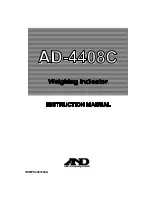
Level Triggering
Level triggering is available only on the 34465A/70A with the DIG option. Level triggering allows you to
trigger measurements at some defined point on the input signal, such as when the signal crosses zero
volts or when it reaches the midpoint of its positive or negative peak amplitude. For example, this graphic
shows sampling beginning as the input signal crosses 0V with a positive slope:
About Level Trigger
Level triggering is available for these measurement functions:
l
DC voltage and DC current
l
AC voltage and AC current
l
2-wire and 4-wire resistance with offset compensation off, and low power off
l
Temperature, RTD or thermistor sensors only
l
Frequency and period
The level trigger is edge-sensitive. That is, the instrument must detect a
change
in the quantity being meas-
ured from one side of the level setting to the other side (direction controlled by Slope setting). For
example, if the Slope is positive, then the quantity being measured must first reach a value
below
the set
level before a trigger event can be detected.
Level trigger performance is not uniform. Its accuracy, latency, and sensitivity are dependent on other
DMM features. These dependencies vary by measurement function as described below.
DC voltage, DC current, and 2-wire resistance considerations
These measurement functions can use a fast-response detector built into the hardware for fixed-range
measurements. For lowest latency and highest sensitivity, use a fixed range when using level trigger.
However, trigger level accuracy is reduced when the hardware detector is used.
To increase trigger level accuracy and reduce sensitivity (avoid false triggers due to noise), use autorange:
Keysight True
volt
Series Operating and Service Guide
187
Measurement Tutorial
















































